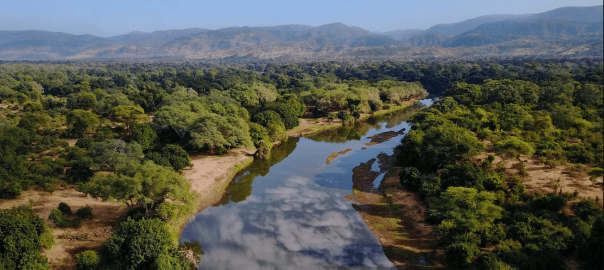June 5, 2023 /Environment/ — The Zambia Environmental Management Agency (ZEMA) ordered Mwembeshi Resources Limited to cease all mining and construction activities in Lower Zambezi National Park on May 31, 2023. The order was made after ZEMA found that the company had violated a number of environmental conditions pertaining to the Kangaluwi copper mine.
The Kangaluwi copper mine is a proposed open-pit mine located in Lower Zambezi National Park, a UNESCO World Heritage Site. The mine has been controversial since its inception, with environmental groups and local communities raising concerns about the potential impact of the mine on the environment and the local economy.
The environmental concerns include the potential for the mine to pollute the water and air, disrupt wildlife migration patterns, and damage the park’s ecosystem. The economic concerns include the potential for the mine to displace local communities and disrupt the tourism industry.
The Zambian government has defended the decision to allow the mine to proceed, arguing that it will bring much-needed jobs and investment to the country. However, the government has also acknowledged the environmental and economic concerns, and has promised to take steps to mitigate them.
The order by ZEMA is a setback for Mwembeshi Resources Limited, but it is not the end of the story. The company could appeal the order, or it could try to negotiate a new agreement with the government. The future of the Kangaluwi copper mine is uncertain, but the controversy is likely to continue for some time.
Here is a more detailed look at the environmental and economic development perspectives of this issue:
Environmental perspective
The Lower Zambezi National Park is a UNESCO World Heritage Site, and it is home to a wide variety of wildlife, including elephants, lions, leopards, and hippopotamuses. The park is also an important source of water for people and wildlife in the region.
The Kangaluwi copper mine is a proposed open-pit mine, which means that it would involve the removal of large amounts of topsoil and rock. This could have a significant impact on the environment, including:
- Pollution of the water and air
- Disruption of wildlife migration patterns
- Damage to the park’s ecosystem
The Zambian government has said that it will take steps to mitigate the environmental impact of the mine, but environmental groups are skeptical. They argue that the mine is too risky, and that it would be better to protect the park for future generations.
Economic development perspective
The Kangaluwi copper mine could bring much-needed jobs and investment to Zambia. The mine is expected to create up to 10,000 jobs during construction, and up to 5,000 jobs during operation. The mine is also expected to generate millions of dollars in revenue for the government.
However, the economic benefits of the mine must be weighed against the environmental risks. The mine could displace local communities and disrupt the tourism industry. It could also pollute the water and air, and damage the park’s ecosystem.
The Zambian government has said that it will take steps to mitigate the environmental impact of the mine, but it is unclear whether these measures will be enough. The decision of whether or not to proceed with the mine is a difficult one, and there are no easy answers.
Lower Zambezi National Park is best known for its wildlife and its spectacular scenery. The park is home to a wide variety of animals, including elephants, lions, leopards, hippopotamuses, and crocodiles. It is also home to a variety of birds, including fish eagles, kingfishers, and hornbills.
The park is also significant to Zambia for its economic value. Tourism is a major source of income for the park, and it is estimated that the park generates over $100 million in revenue each year. The park also provides a number of other benefits to Zambia, including:
- Water supply: The park is an important source of water for people and wildlife in the region.
- Climate regulation: The park helps to regulate the climate in the region, by moderating temperatures and providing shade.
- Soil conservation: The park helps to conserve soil by preventing erosion.
- Carbon sequestration: The park helps to sequester carbon dioxide from the atmosphere, which helps to mitigate climate change.
Lower Zambezi National Park is a valuable asset to Zambia, and it is important to protect it for future generations.
Here are some additional facts about Lower Zambezi National Park:
- It was established in 1983.
- It covers an area of 4,092 square kilometers.
- It is located in southeastern Zambia.
- It is a UNESCO World Heritage Site.
- It is home to over 600 species of animals.
- It is a popular destination for safaris and other forms of tourism.

